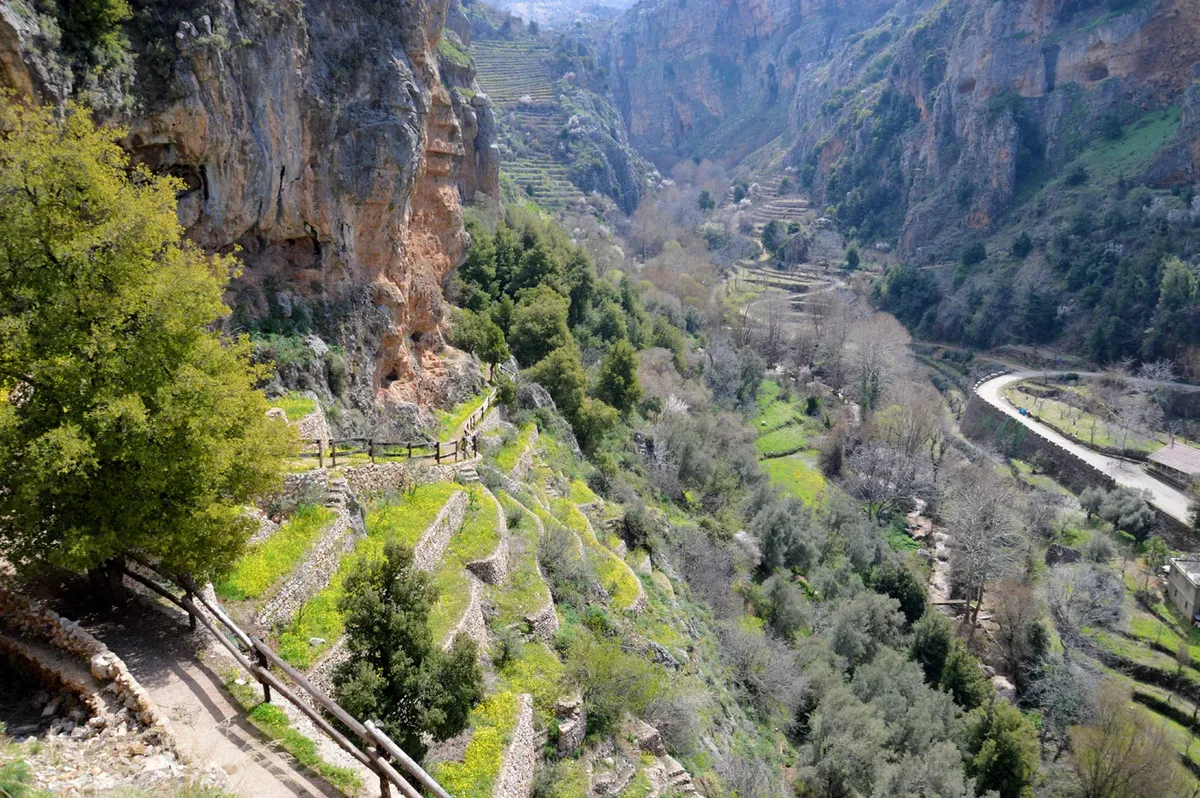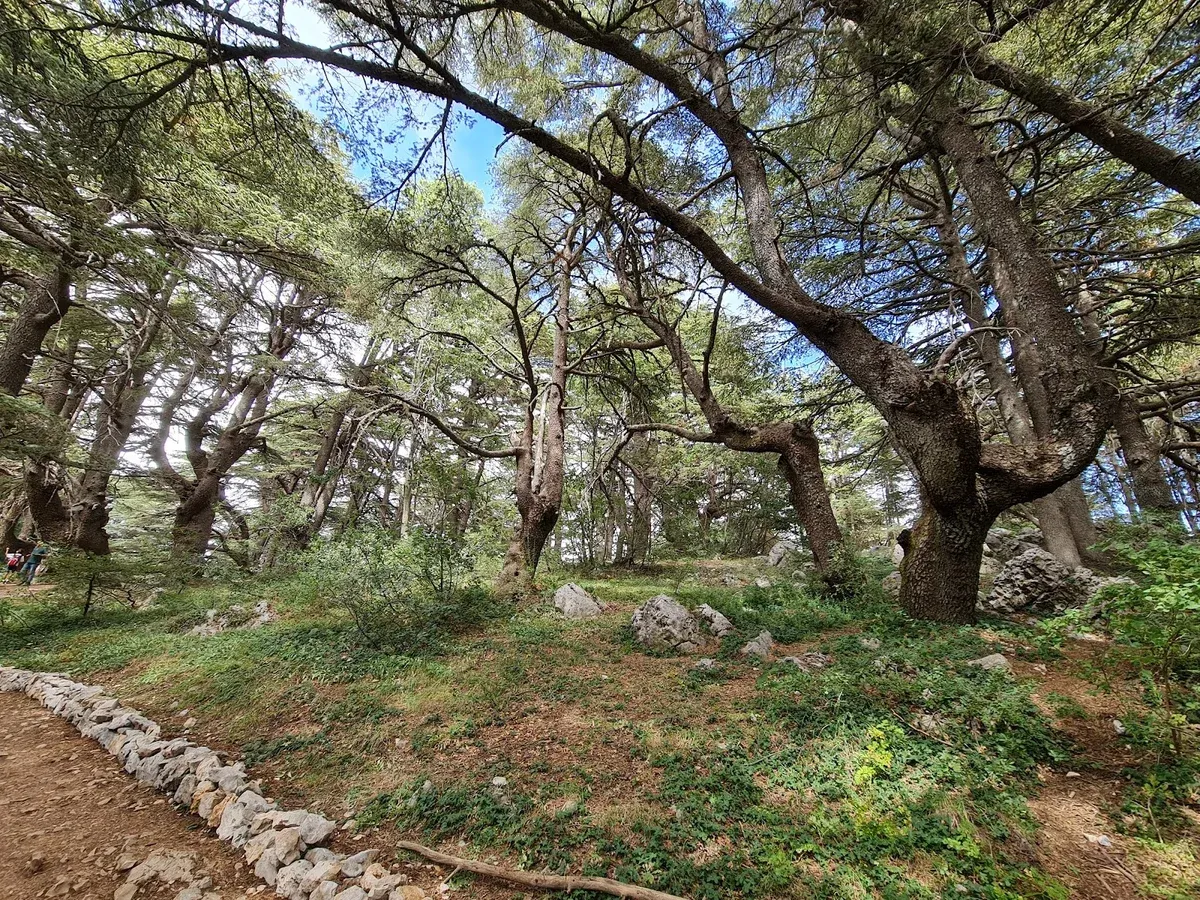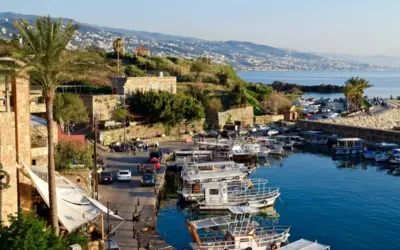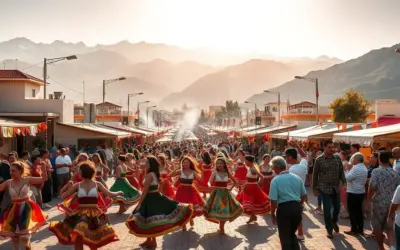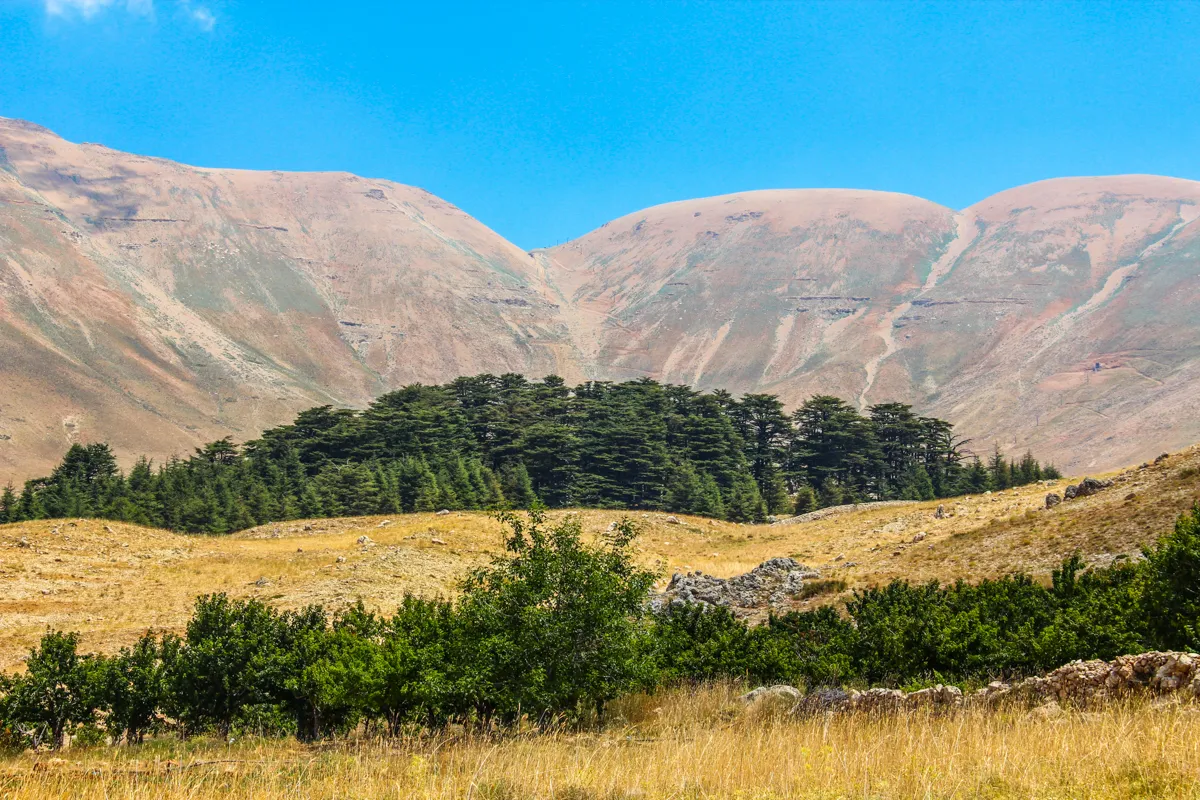An unexpected paradise: why your next epic hike is in Lebanon For many, the name Lebanon conjures images shaped by news cycles, overlooking a reality of breathtaking natural beauty. This is a land of towering, snow-capped mountains that give the country its name, ancient cedar forests that have stood for millennia, and dramatic, sun-drenched valleys carved into the very heart of the Middle East.
The Lebanon hiking experience offers a profound sense of tranquility and a connection to history that stretches back to the dawn of civilization. To be clear, this guide is dedicated to the country of Lebanon, a jewel of the eastern Mediterranean, not to be confused with the various towns and parks in the United States that share its name. The trails here traverse a nation rich in a complex tapestry of cultures, cuisines, and landscapes, offering an unparalleled experience for the discerning adventurer willing to look beyond the headlines.
Qadisha Valley: A UNESCO Spiritual Refuge for Hiking in Lebanon
The Qadisha Valley, whose name translates to “Holy Valley,” is more than just a hiking destination—it’s a profound journey into the heart of Lebanon’s spiritual history. Recognized as a UNESCO World Heritage site, this dramatic and rugged gorge served as one of the earliest and most important Christian monastic settlements in the world. For centuries, its sheer cliffs and remote caves provided a natural refuge for Maronite hermits and monastic communities fleeing persecution, creating a landscape where spiritual heritage and natural grandeur are inseparable. This makes it a cornerstone experience for anyone interested in hiking in Lebanon.
- Best time to visit: April to October, with spring (April-May) being particularly spectacular when wildflowers bloom and waterfalls are at their most powerful.
- Location: Northern Lebanon, accessed primarily from the village of Bsharri (Bcharre).
- Difficulty level: Moderate to difficult, with steep descents and ascents.
What Makes Qadisha Valley Special
The journey often begins in the village of Bcharre, perched on the valley rim. From there, the trail zig-zags steeply downwards through fragrant apple orchards and fields of spring wildflowers. Hikers describe scrambling down orange-hued rocks and crossing tiny streams, all while the valley walls seem to grow taller and the village above recedes to toy proportions. The path, sometimes overgrown with tall grasses, feels like a secret passage into another world.
The valley reveals incredible hidden treasures along its trails. The Monastery of Mar Elisha, a structure hewn from the rock that now serves as a museum, offers a glimpse into the valley’s monastic past. Further along, hikers can reach the still-working convent of Deir Qannoubine, one of the oldest religious communities in the valley. Near the valley, the Cedars of God forest contains some of the oldest and most magnificent examples of Lebanon’s national tree.
Key Attractions and Activities
- Rock-cut monasteries including Mar Elisha and Deir Qannoubine.
- Meeting with hermit monks who still maintain the ancient spiritual tradition.
- Visiting the Cedars of God forest with its ancient cedar trees.
- Photographing dramatic cliff faces, agricultural terraces, and religious architecture.
Where to Stay
The towns of Bcharre and Hasroun are excellent bases for exploring the holy valley. Villa Chamoun in Hasroun is a beautifully restored 1960s family home turned boutique guesthouse. Dar Qadisha offers a cozy stay with a host renowned for her homemade jams. Guesthouses typically range from $50-100 per night.
Considerations for This Hike
The Qadisha Valley offers an unmatched combination of spiritual depth, natural beauty, and challenging terrain. However, visitors must be prepared for the physical demands of the steep descents and subsequent ascents out of the valley, which can be taxing. Trails can also become overgrown, requiring careful navigation. During peak spring months, the valley can see increased visitor traffic near the main monasteries.
Shouf Biosphere Reserve: Hiking Among Lebanon’s Ancient Cedars
The Shouf Biosphere Reserve is Lebanon’s largest nature reserve and home to its most iconic cedar forests. Imagine stepping out of your car at a trailhead high in the Shouf Mountains where the air is crisp, clean, and cool. The first thing that strikes you is the silence—a deep, resonant quiet. Before you, a well-made path invites you forward, and as you walk, you see them: the majestic Lebanese Cedars, their ancient, horizontal branches spreading like a protective canopy. This reserve provides some of the most accessible and rewarding hiking in Lebanon.
- Best time to visit: April to October, though the reserve is accessible year-round.
- Location: Mount Lebanon Range, accessed from villages including Deir El-Qamar and Barouk.
- Difficulty level: Easy to difficult, with trails ranging from family-friendly walks to challenging mountain hikes.
What Makes Shouf Special
The Shouf Biosphere Reserve spans a massive area and contains three distinct cedar forests: Maasser el-Shouf, Barouk, and Ain Zhalta-Bmahray. The reserve’s biodiversity is remarkable, hosting over 500 plant species and serving as a refuge for numerous animals. The panoramic trails wind along ridges, offering stunning, uninterrupted views down toward the distant, glittering Mediterranean coast.
The 6 km “panoramic” loop trail is particularly popular, providing an accessible introduction to the reserve’s beauty without requiring extreme fitness levels. The trail is well-maintained and clearly marked, making it suitable for families while still offering a profound connection to an ancient landscape.
Key Attractions and Activities
- Three major cedar forests with trees up to 2,000 years old.
- Well-maintained trail network with varying difficulty levels.
- Wildlife viewing opportunities including gazelles and birds of prey.
- Panoramic views stretching to the Mediterranean coast.
- Visitor centers with educational exhibits about conservation.
Where to Stay
The villages surrounding the biosphere reserve offer charming guesthouses. In the picturesque town of Deir El-Qamar, you can find places like Beyt El-Jabal. Near Maaser Beiteddine, the Bouyouti estate offers unique stone cottages. For an eco-conscious stay, Bkerzay is an eco-lodge committed to sustainability. Accommodation typically ranges from $60-120 per night.
Considerations for This Hike
The Shouf Biosphere Reserve excels in accessibility, making it an ideal introduction to Lebanon hiking for many. The well-marked paths and visitor facilities create a safe and almost meditative environment. However, its accessibility and proximity to Beirut mean it can become crowded during weekends and holidays. Those seeking true wilderness may find the well-developed infrastructure reduces the sense of remote adventure.
The Lebanon Mountain Trail (LMT): A Premier Long-Distance Trek
The Lebanon Mountain Trail (LMT) is the country’s answer to legendary long-distance hikes, spanning approximately 470 kilometers (292 miles) from Andqet in the north to Marjaayoun in the south. This trail is built upon a network of ancient donkey paths, goat trails, and old footpaths that have connected remote villages for centuries. It represents a remarkable fusion of ancient history and modern ecotourism, making it the ultimate Lebanon hiking challenge.
- Best time to visit: April to October for most sections; June to August for the highest elevation segments.
- Location: Traverses the entire length of Lebanon from north to south.
- Difficulty level: Moderate to difficult, with significant daily elevation changes.
What Makes the LMT Special
The Lebanon Mountain Trail was thoughtfully developed into a world-class ecotourism product, supported by organizations like the Lebanon Mountain Trail Association and funding from agencies like USAID. This effort means hikers are not just wandering through history but doing so on a route that is waymarked and supported by a modern conservation ethos.
The trail is divided into 27 sections, each designed to be a day’s hike, ending in a village with accommodation. This village-to-village approach is one of the LMT’s greatest strengths, providing daily opportunities for cultural exchange, sampling authentic Lebanese cuisine, and experiencing the nation’s legendary hospitality. Unlike backcountry trails requiring camping gear, the LMT allows hikers to travel light with only a daypack.
Key Attractions and Activities
- 27 distinct sections offering varied landscapes and cultural experiences.
- Daily stays in mountain villages with authentic guesthouse accommodation.
- Passage through multiple nature reserves including Shouf and Horsh Ehden.
- Ancient archaeological sites and historic villages along the route.
Planning Your LMT Journey
Most hikers tackle sections of the trail rather than the entire 30-35 day route. Popular multi-day sections include the northern stretch through Qadisha Valley and the central sections through the Shouf mountains. Trail maps and GPS tracks are available through the LMT Association. While experienced hikers can go independently, most visitors benefit from hiring a guide for logistics, cultural context, and safety.
Considerations for This Trek
The LMT’s brilliance lies in its accessibility without sacrificing authenticity. The village-to-village structure provides safety and cultural richness. However, those seeking absolute wilderness solitude may find it less remote than other backcountry trails. Planning logistics like luggage transfer and accommodation requires advance organization, and popular sections can be busy during peak season.
Jabal Moussa Biosphere Reserve: Mythological Valley Hikes
The Jabal Moussa Biosphere Reserve offers a captivating blend of natural beauty, Roman history, and Greek mythology in the dramatic Adonis Valley. This reserve stands out for its unique combination of archaeological significance and endemic flora, creating a hiking experience that engages both the mind and the senses, and it’s easily accessible for a day of hiking from Beirut.
- Best time to visit: March to June for optimal wildflower displays, April to October for general hiking.
- Location: Mount Lebanon Range, accessed from villages of Chouwen and Qehmez.
- Difficulty level: Easy to moderate, with well-maintained trails.
What Makes Jabal Moussa Special
The reserve’s most famous feature is the Chouwen Lake trail. This relatively easy to moderate hike descends into the scenic Adonis Valley, leading to a beautiful, swimmable natural lake. The trail passes through diverse vegetation and offers spectacular views. Swimming in the cool, clear waters of Chouwen Lake after the descent is a major highlight.
A unique historical treasure is the series of inscriptions commissioned by the Roman Emperor Hadrian in 130 AD. These ancient carvings, etched into rock faces along old Roman roads, commemorate military projects. Finding these 2,000-year-old inscriptions adds an incredible layer of historical depth to your hike.
Key Attractions and Activities
- Chouwen Lake with swimming opportunities in pristine mountain waters.
- Hadrian’s Roman inscriptions marking ancient roads.
- Spring wildflower displays featuring endemic Lebanese species.
- Adonis Valley views connecting to Greek mythological heritage.
Where to Stay
The nearby villages of Chouwen and Qehmez offer guesthouses, though many visitors base themselves in Beirut (about 1.5 hours away) and visit as a day trip. Local stays typically cost $50-90 per night.
Considerations for This Hike
Jabal Moussa is perfect for a rewarding day hike without the commitment of a multi-day trek. The combination of nature, history, and mythology is richly layered. However, this accessibility means the Chouwen Lake trail can become quite busy during weekends. The trails are shorter and less varied than in larger reserves, which may leave experienced hikers wanting more challenge.
Horsh Ehden Nature Reserve: A Biodiversity Sanctuary for Trekkers
The Horsh Ehden Nature Reserve represents one of Lebanon’s most important ecological treasures, protecting a remarkably diverse range of forest ecosystems. For nature enthusiasts and serious hikers seeking biological diversity and challenging terrain, Horsh Ehden offers an experience that emphasizes conservation and wilderness character, representing a different side of the Lebanon hiking landscape.
- Best time to visit: May to October, with autumn (September-October) offering pleasant temperatures.
- Location: Northern Lebanon, accessed from the village of Ehden.
- Difficulty level: Easy to challenging, with significant elevation variation.
What Makes Horsh Ehden Special
The reserve’s greatest strength is its extraordinary biodiversity. Within its compact area, Horsh Ehden contains stands of Lebanese cedar, Cilician fir, Greek juniper, and wild apple trees. This habitat supports over 1,000 plant species, many endemic, and provides refuge for wildlife including wolves and wild cats.
The trail network ranges from gentle forest walks to steep, demanding ascents. The highest trails climb toward the summit of Qurnat as Sawda, Lebanon’s tallest peak at 3,087 meters (10,128 feet), offering truly alpine hiking experiences and one of the most significant mountaineering challenges available in Lebanon.
Key Attractions and Activities
- Multiple forest ecosystems including cedar, fir, and juniper stands.
- Access to Qurnat as Sawda, Lebanon’s highest peak.
- Exceptional wildlife viewing opportunities for endemic and rare species.
- Diverse plant life including wild apple trees and medicinal herbs.
Where to Stay
The village of Ehden, perched at a high elevation, serves as the primary base. It offers a range of guesthouses and small hotels ($60-100 per night). Ehden itself is worth exploring, with a charming old quarter and excellent local restaurants.
Considerations for This Hike
Horsh Ehden provides a genuine wilderness experience ideal for environmentally conscious hikers. The access to Qurnat as Sawda is a major draw for peak-baggers. However, its remote northern location requires more travel time from Beirut (2-3 hours). The challenging terrain is less suitable for beginners, and weather can be unpredictable at high elevations.
Practical Guide: Planning Your Lebanon Hiking Adventure
This section provides the essential, practical information you need to plan your trip. Proper planning is key to a successful and safe Lebanon hiking experience, especially given the country’s complex travel advisories.
Safety and Travel Considerations (YMYL)
The U.S. State Department currently maintains a Level 4 “Do Not Travel” advisory for Lebanon. This reality requires honest acknowledgment and careful planning. While many travelers visit the hiking regions described in this guide without incident (as they are generally considered safer than border areas), the security situation is complex.
The most responsible approach is to stay continuously informed via official State Department updates, avoid all border regions, and strongly consider hiring reputable local guides or using established tour companies. These professionals possess real-time, on-the-ground knowledge and provide invaluable security, logistical support, and cultural interpretation.
Getting There and Transportation
All international flights arrive at Beirut-Rafic Hariri International Airport (BEY). Lebanon lacks a comprehensive public transport system for reaching trailheads.
- Renting a car: Offers flexibility but be prepared for challenging mountain roads with hairpin turns and aggressive local driving styles.
- Hiring a private driver or tour: This is the most convenient and hassle-free option, allowing you to relax while an experienced local navigates.
Accommodation: The Guesthouse Experience
A highlight of hiking in Lebanon is the guesthouse culture. Instead of backcountry camping, the norm is to hike from village to village, staying in local guesthouses. This provides unique opportunities for authentic cultural exchange and sampling delicious home-cooked Lebanese cuisine. Platforms like Booking.com, Airbnb, and L’Hôte Libanais are excellent resources. Expect to pay $40-120 per night.
Essential Gear for Lebanese Mountains
Layering is essential due to variable altitudes.
- Clothing: Moisture-wicking t-shirts, hiking shorts, long pants, a fleece jacket, and a waterproof/windproof jacket.
- Footwear: Sturdy, broken-in hiking shoes or boots.
- Gear: A lightweight daypack (20-30L), hiking poles (highly recommended for descents), reusable water bottle, and a portable power bank.
- Health: High-SPF sunscreen, hat, sunglasses, a personal first-aid kit, and any prescription medications.
- Documents: Passport, copy of travel insurance, and downloaded trail maps or GPS tracks.
Cultural Etiquette for Trails and Towns
- Greetings: Take time for greetings; a handshake with eye contact is respectful.
- Hospitality: Always accept an offer of coffee or tea, as refusing can be impolite.
- Dress Code: While Beirut is liberal, dress modestly (covering shoulders and knees) when visiting rural villages and religious sites.
- Conversation: Avoid sensitive topics like local politics or religion unless your host brings them up first.
Costs and Budgeting for Your Hike
- Budget traveler: $50-80 per day (guesthouses, simple meals).
- Mid-range traveler: $100-150 per day (comfortable guesthouses, varied dining, guided day hikes).
- Specific costs:
- Guesthouse: $40-120/night
- Restaurant meal: $10-25
- Nature reserve entrance: $5-10
- Full-day guided hike: $80-150
Conclusion: Why Your Next Hike Should Be in Lebanon
Lebanon hiking offers an extraordinary adventure that combines breathtaking natural landscapes, profound historical depth, and authentic cultural encounters in a way few destinations can. From the ancient monasteries of Qadisha Valley to the iconic cedars of the Shouf and the epic village-to-village journey along the Lebanon Mountain Trail, these mountains reward those who venture beyond the headlines. While the security situation requires careful planning, the trails themselves are supported by a conservation-minded infrastructure and the legendary Lebanese hospitality that transforms each day’s hike into a truly enriching journey.
